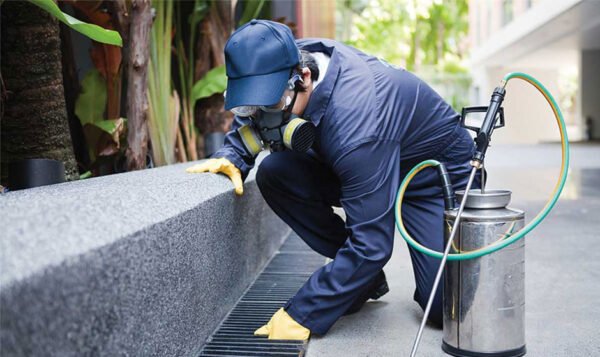Empower Your Child’s Sleep: Practical Tips to End Bedwetting

Bedwetting, medically known as nocturnal enuresis, is a common condition that affects millions of folks worldwide, regardless of age. While it is often associated with toddlers, it can persist into adolescence and adulthood, causing distress and impacting quality of life. Fortunately, effective strategies exist to address bedwetting and empower children to enjoy uninterrupted sleep. This article explores practical tips on how to stop bedwetting and promote restful nights.
Understanding Bedwetting
Before delving into strategies to combat bedwetting, it’s essential to understand its underlying causes. Bedwetting can stem from various factors, including hormonal imbalances, genetic predisposition, bladder issues, and psychological stressors. Additionally, neurological conditions such as ADHD or developmental delays may contribute to nocturnal enuresis.
For many kids, bedwetting is a developmental phase that resolves naturally over time. However, persistent bedwetting beyond the age of five may indicate an underlying issue that requires attention. Consulting a healthcare professional is crucial to determining the most appropriate action and excluding medical concerns.
Practical Tips to End Bedwetting
- Establish a Consistent Bedtime Routine:
A structured bedtime routine can help regulate sleep patterns and promote bladder control. Encourage going to bed at the same time each night and engaging in calming activities before sleep, such as reading or gentle stretching. Consistency is critical to reinforcing healthy sleep habits and reducing the likelihood of bedwetting incidents.
- Limit Fluid Intake Before Bed:
Minimising fluid consumption, particularly caffeinated or sugary beverages, is crucial in the hours before bedtime. Encourage your child to drink fluids earlier in the day to ensure hydration without disrupting sleep with frequent trips to the bathroom. This simple yet effective strategy helps regulate bladder function and reduces the likelihood of nocturnal enuresis. By implementing these dietary adjustments, families can proactively manage bedwetting and promote better sleep hygiene for their children. It’s a small change that can make a significant difference in the quest for dry nights and improved quality of life.
- Use Protective Bedding:
Investing in waterproof mattress covers and absorbent undergarments is a prudent step toward managing bedwetting effectively. These protective measures shield bedding from accidents and offer peace of mind to kids experiencing bedwetting and their caregivers. Waterproof mattress covers and absorbent undergarments alleviate the stress and disruption associated with bedwetting incidents by minimising the impact of nighttime accidents. Furthermore, they promote a more comfortable and hygienic sleep environment, enhancing the overall sleep quality for everyone involved. These practical solutions provide security and assurance, allowing parents and caregivers to navigate bedwetting challenges with confidence and resilience.
- Encourage Regular Bathroom Breaks:
Encouraging children prone to bedwetting to empty their bladder before bedtime and implementing scheduled bathroom breaks throughout the evening can significantly reduce the occurrence of nocturnal enuresis, ultimately promoting dry nights. Ensuring the bladder is emptied before sleep decreases the likelihood of involuntary urination, leading to improved sleep quality and greater confidence. Implementing scheduled bathroom breaks throughout the evening further reinforces healthy bladder habits and reduces the risk of bedwetting episodes. Consistency and diligence in these simple yet effective practices can make a substantial difference in managing bedwetting and fostering a sense of control over bladder function.
- Reward Positive Behavior:
Positive reinforcement can be a powerful motivator for behaviour change. Establish a reward system to celebrate dry nights and encourage progress towards overcoming bedwetting. Rewards can be simple gestures such as stickers or verbal praise, reinforcing confidence and self-esteem.
- Address Underlying Stressors:
Psychological stressors such as anxiety or changes in routine can exacerbate bedwetting episodes. Take steps to identify and address any underlying stressors contributing to nocturnal enuresis. Techniques such as relaxation exercises or therapy may help manage stress and improve sleep quality.
- Seek Professional Guidance:
If bedwetting persists despite implementing these strategies, seek guidance from a healthcare professional. A thorough evaluation can help identify any underlying medical conditions or behavioural factors contributing to bedwetting. Treatment options may include medication, bladder training, or behavioural therapy tailored to diverse needs.
Promoting Empowerment and Understanding
Empowering children affected by bedwetting involves fostering understanding, empathy, and support. It’s essential to approach the issue with sensitivity and compassion, recognising that the answer to how to stop bedwetting is a common and treatable condition. By implementing practical strategies and seeking appropriate guidance, parents can help their children take control of their sleep and regain confidence in their ability to enjoy restful nights.
Conclusion
Bedwetting can present challenges for children and their families, but it is possible to overcome this common condition with the right approach. Parents can take proactive steps towards achieving dry nights by understanding their children’s underlying causes of bedwetting and implementing practical strategies such as establishing a consistent bedtime routine, limiting fluid intake before bed, and using protective bedding. Additionally, seeking professional guidance can provide valuable support and modified interventions to address underlying medical or behavioural factors contributing to bedwetting.



